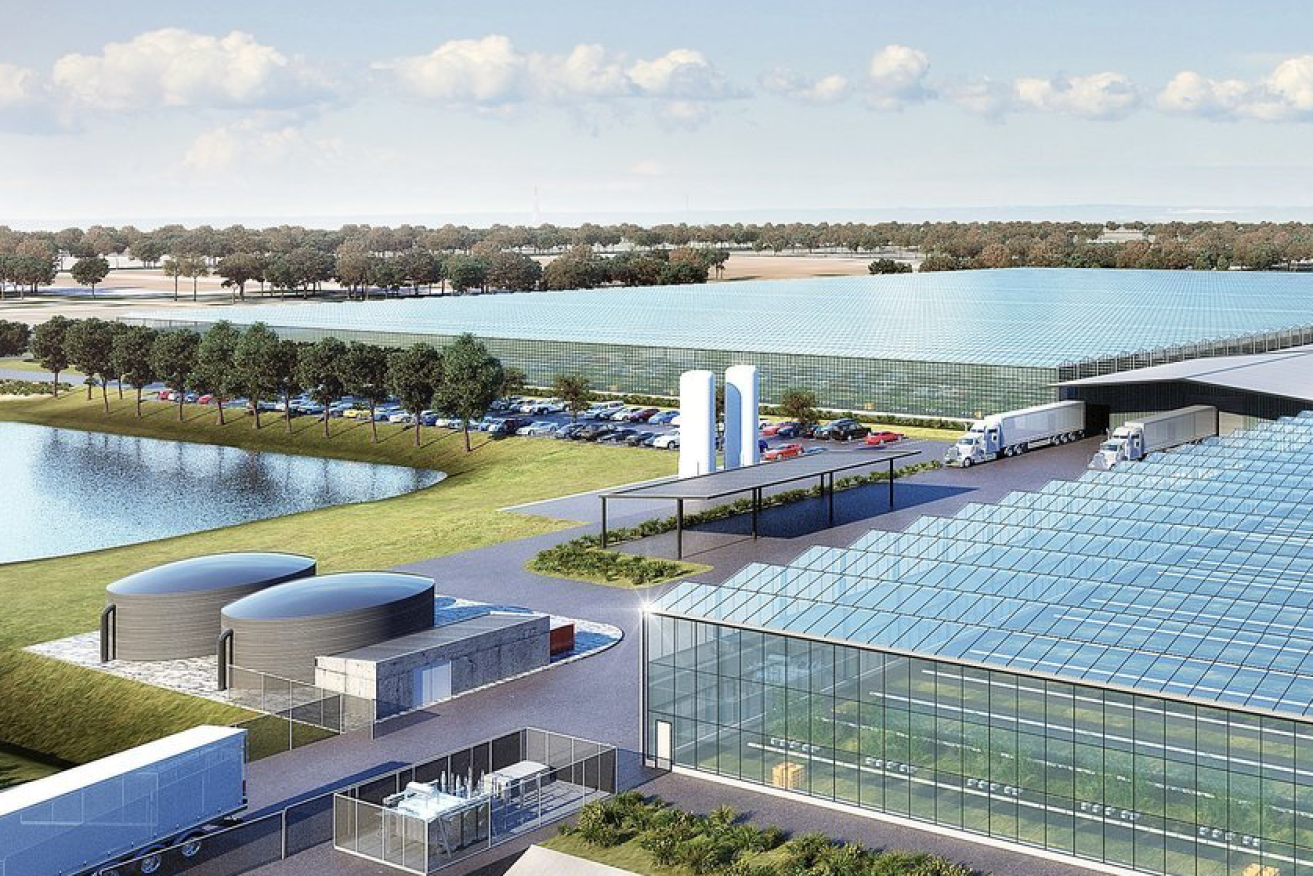How green power could unpack our cities


An artist's impression of a huge hydroponic vegetable facility being built in western Victoria.
One of the forecasts that came with the 2016 census data was that Melbourne would overtake Sydney as Australia’s biggest city, reaching eight million people by 2050.
Well, perhaps, but 33 years is a long time and plenty of things will change in the meantime.
One of the big changes that may affect that census forecast is the way energy is about to be redistributed across regional Australia.
Cities have always relied on cheap power, but as the Finkel report showed three weeks ago the cheapest source of new power is now via wind farms, and they just can’t be built at scale in the cities.
As reported previously, wind is cheapest even if ‘firming costs’ are added – the cost of storing or buying power when the wind drops.
Those economics are helped, of course, by the subsidies built into the Renewable Energy Target (RET), but unless Tony Abbott really does rise from the political grave that – or an even better ‘clean energy target’ recommended by the Finkel Report – is here to stay.
Like any source of electricity, the pinnacle of efficiency is to use it where it is generated – the cost of transmission networks, plus the power lost through ‘voltage drop’ over large distances account for more than half the cost of traditional grid power.
It’s now becoming clear that renewable power, built and used in the regions, will change the economics of many businesses.
A case in point is the decision by agri-business firm Nectar Farms to go ‘off grid’ for its energy needs at a massive hydroponic vegetable-growing operation in Victoria’s western districts.
The company crunched the numbers for traditional power, and found it too expensive for its business model.
However, by investing in its own ‘behind the meter’ energy storage, supplied privately by a nearby wind farm, the company’s business is again viable.
It is installing a 34 MWh storage facility to give it more control over variable wind conditions. That will keep its temperature-controlled greenhouses ticking over all year round.
Nectar Farms CEO Steven Sasse tells me each 10 hectare site will require the full-time equivalent of 85 workers, at rates of pay much higher than normally seen in the regions – reflecting the high value-added nature of the vegetables grown, but also the skilled but repetitive nature of the work.
Mr Sasse has 40 hectares planned, but hopes to scale up to 120 hectares. That would see the equivalent of 1000 above-average, full-time incomes injected into the local community, in turn supporting hundreds more jobs in local businesses.
Goodbye to the big smoke
The significance of the Nectar Farms project is that it breaks the link between cheap energy and the grid set up primarily to serve the city. It therefore exploits a real competitive advantage in the regions.
Former Labor trade minister Craig Emerson tells me the history of regional development, such as Gough Whitlam’s ‘growth centres’ strategy, has been dogged by governments trying to impose competitive advantage where none existed.
In a very short space of time, however, the regions have woken up to realise they have something the cities don’t have – cheap power that no politician or power company can interfere with.
The regions have the space, the wind, the sun and a growing army of technicians and engineers to create power at prices lower than sprawling city grids can match.
That alone does not mean businesses like Nectar Farms will attract workers away from the big smoke.
Mr Emerson argues that ‘soft infrastructure’ including top-quality health and education facilities, and the cafes, gyms and other recreational pursuits city-slickers enjoy is key to that process.
But the more well-paid jobs are created, the more those things will thrive, and the more city folk will think twice about whether living in a mega-city is for them.
So who knows – 33 years down the track, a good chunk of the eight million people supposedly destined to make Melbourne the biggest city in the land could be more scattered across the regions than the census statisticians dare imagine.








